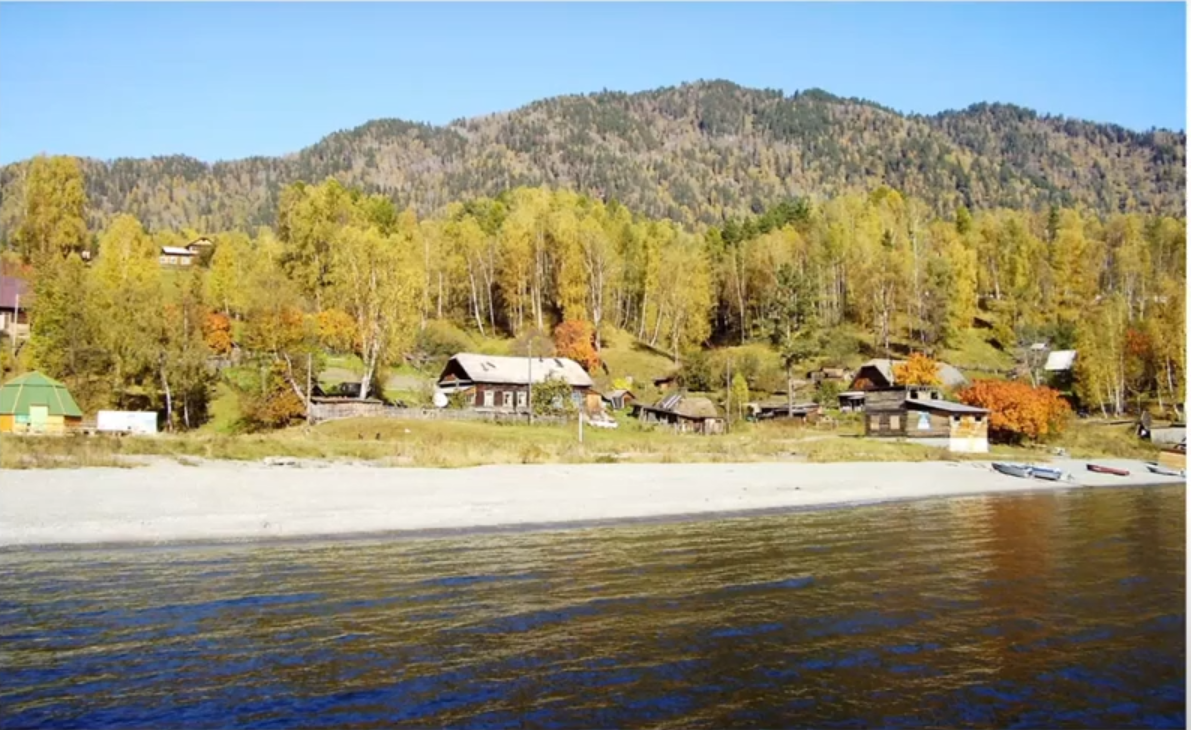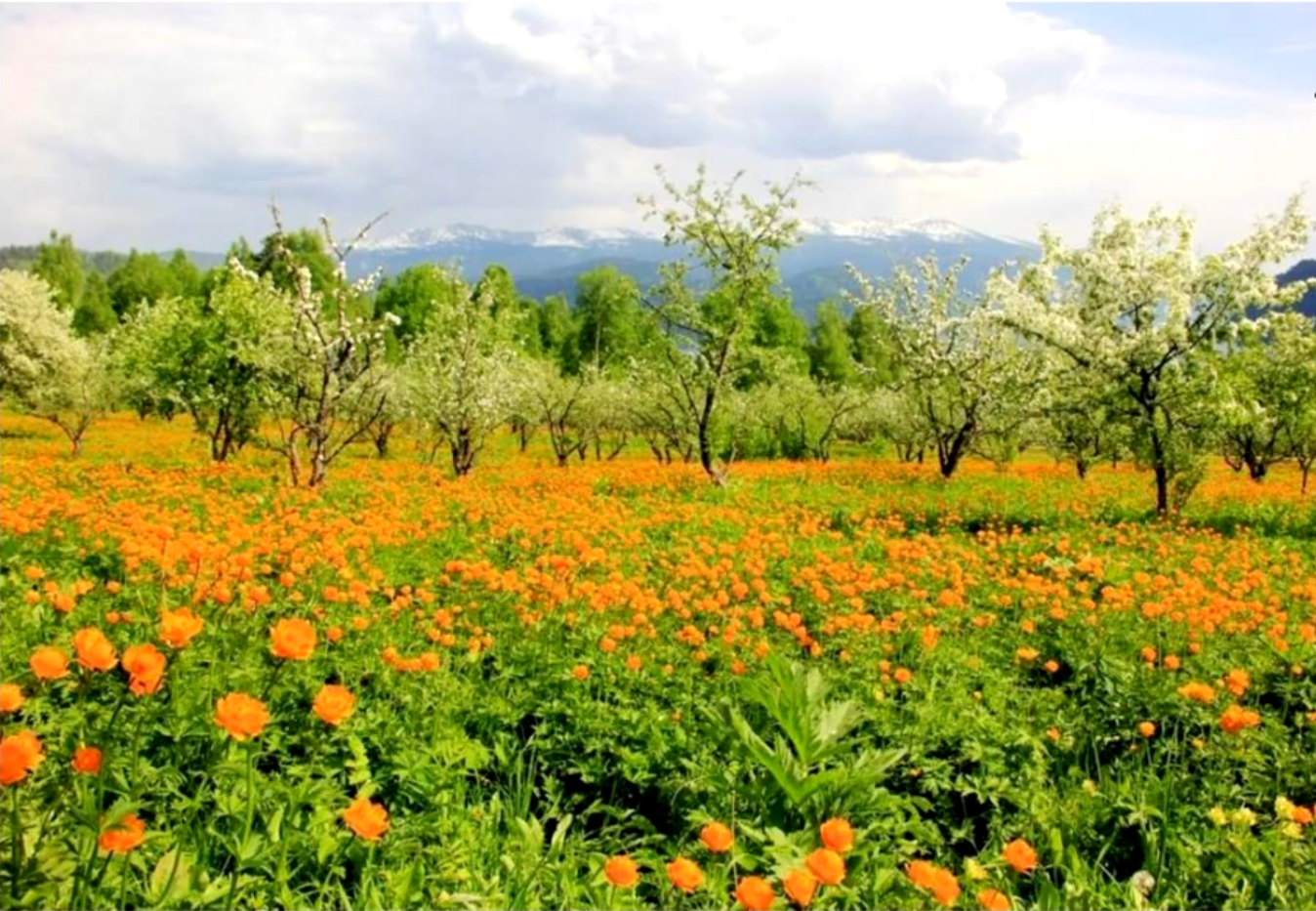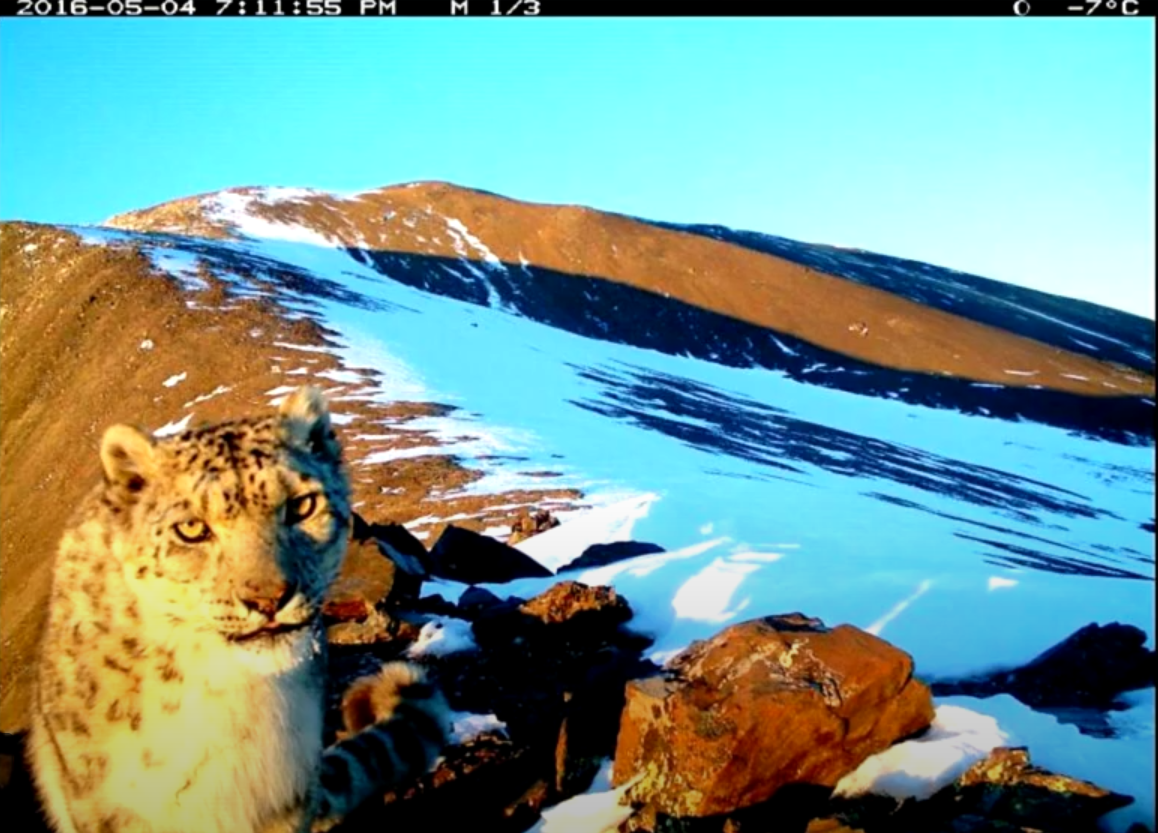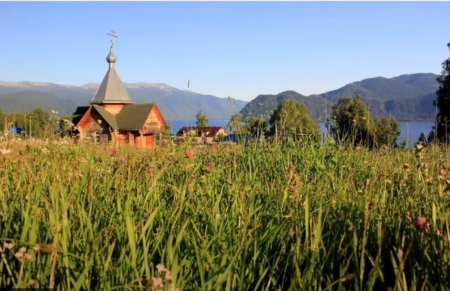
The Altai Nature Reserve, one of the oldest in Russia, was founded in 1932 and preserved the relict taiga forests, unique high-mountain tundra, pristine lakes and rivers, as well as rare species of flora and fauna of the Altai Mountains to this day.
The value and uniqueness of the Altai natural resources were recognized internationally in 1998 when the Altai (also: Altaisky) and Katun (also: Katunsky) Nature reserves were inscribed on the UNESCO World Heritage List of Cultural and Natural sites as the ‘Golden Mountains of Altai’. In May 2009, during the 21st session of the International Coordinating Council of the ‘Man and the Biosphere’ Programme the decision was made to include the Altai Reserve into the UNESCO World Network of Biosphere Reserves.
Igor Kalmykov, the director of the Altai Reserve, told EcoTourism Expert readers about the history of one of the oldest reserves in Russia and its most interesting natural attractions - the relict Siberian cedar (Pinus sibirica) woodland, waterfalls and Lake Teletskoye, the second largest one after Lake Baikal and the largest body of freshwater in the Altai Mountains. Being an adventurous traveller and avid diver fascinated by these places, he considers them truly magical and keeps on telling us about this.
- This year the Altai Reserve is 88 and these two inverted infinity signs are in its record-book. But it also went through its tragic episodes as in the difficult years of the last century, there were two attempts to abolish the Reserve and but it returned to life again. How are things now?
- There is something behind these two ‘eights’! In my opinion, the Altai Reserve is surrounded by an enigmatic aura of mysticism and symbolism, it is no coincidence that our Republic is located at the junction of three countries famous for the Oriental wisdom - China, Mongolia and Kazakhstan. The Reserve is just amazing! Here, you can undestand what you really are. It was conceived and created as a huge biosphere area to preserve not only its nature but also the culture and the peoples who lived here in harmony.

The Reserve survived two liquidations, one during the Stalin’s rule, from 1951 to 1958, and the second one - during the Khrushchev years, from 1961 to 1967, however, it rose each time as the Phoenix bird. I was born in 1961, and the mysticism lies in the fact that when I discovered this coincidence, the clear idea occurred to me - “that’s enough, we need to stop this somehow, the Altai Reserve must never be closed”. And I assure you - it will never be closed!
- What is unique here in the Reserve?
- First of all, of course, its natural resources. It is not by chance that the former emblem of the Reserve depicted an argali mountain sheep and snow leopard. Another very interesting animal here is a reindeer, not an ordinary one, but a very special reindeer. This is a taiga reindeer, a forest species, and it is still unknown how it is able to survive in the Reserve. A small reindeer herd inhabit the Altai Nature Reserve adjacent to Tyva and Khakassia - and nowhere else in the world. This is a small diamond surrounded by the Altai Mountains as the best setting for it. There are also bears in the Reserve often coming to the villages, as well as elks, manul cats, and 333 species of birds - as you can see, this is a special number, too!

Lake Teletskoye, very precious for the whole world, is among the top ten in terms of pure fresh water reserves, and it ranks second in Russia after Lake Baikal. The Reserve also boasts of thousands of small and hundreds of large waterfalls. The most impressive is the Uchar waterfall, 160 metres high, although, scientifically speaking, it is a ‘waterslide’ since it does not fall vertically but flows down the mountain slope.
Lake Dzhulukul is the second largest lake in the Republic of Altai. It is high in the mountains where the ancient relict area left after the Glacial Era has survived to this day. The alpine and steppe flora and fauna coexist here in harmony, dwarf vegetation prevails and there are almost no tall trees in the mountains.
By the way, when we go up the mountains in Altai, in fact, we move from the taiga to tundra. And this lake also has an interesting zonal dependence – while visiting its southern part, you find yourself like in the Chukchi Peninsula, in the tundra steppe, as for its climate and nature. I know what I’m talking about as I used to work in the Chukotka.
- The Altai Reserve has a difficult history, it has many interesting pages, and they say that visitors are no less interested in its history than in the beauty of nature.
- Of course, when people talk about national parks they focus on the natural objects. But I think that it is necessary to underline that the history of all the specially protected natural areas is also the history of the country and the people who lived here, protected these lands and dedicated their lives to this.
I would like to mention Vasily Mikhailovich Peskov, famous in our country. An enthusiastic and keen naturalist, he is still remembered for his regular column in the Komsomolskaya Pravda newspaper dealing with nature. Many have read his wonderful books, and his journalistic discovery about the family of hermits Lykovs became a sensation at those days. And although the staff of the Reserve knew that people who once moved away from the blessings of civilization lived deep in the taiga, a series of the publications about them and the book ‘The Taiga Dead End’ published later became a real revelation for the rest of the world. Agafya Lykova still lives in the hunter's lodge, however, it is located in the area now belonging to the Khakas (also: Khakassky) Reserve, but once it was a site of the Altai Reserve.
The contribution made by Igor Vyacheslavovich Livanov, one of the first directors of the Reserve, to the development of these places and the establishment of nature reserves in Altai cannot be over-emphasized. He worked here for 2 years only, from 1936 to 1938, in those very difficult times, but the first electric lamp appeared in Yaylyu, the central part of the Reserve, at that time as well as the first apple orchards were planted, and bees clustered and hummed over the Yaylyu terrace when the first apiary appeared. He took care both of the nature, local community and the staff of the Reserve. It was on his watch that the first school was opened here, the people working at the Reserve received land plots and they were given nonrefundable subsidies for the purchase of poultry, livestock, and farming. These apple trees still yield harvest, the bees still collect honey. You can come here and enjoy the fruits of this wonderful person’s labours who laid the foundations of the reserve activities in this area over 80 years ago.
Another iconic figure, a real passionary of Lake Teletskoye, is Valentin Vasilyevich Selegey who was appointed the head of the meteorological station back in 1964. Welcoming our guests in the Reserve, we say, “Hello, we are glad to welcome you on the shores of Altyn-Kyol and we will be happy to see the world - in which we live - with your eyes”, and these words belong to him.
(‘Altyn-Kyol’ means ‘Golden Lake’. This is how the indigenous people of Altai call Lake Teletskoye - the lake of amazing beauty, the Biya River flows out of it - ed.).
He started up a hydrogroup at the meteorological station in 1965 when he paid attention that Lake Teletskoye, a huge waterbody surrounded by high mountains, has a powerful climate-forming resource. The research he began in those days and the powerful long-term monitoring of the unique lake requiring to be studied and protected are still ongoing.
The Altai Nature Reserve has become the first place where many employees of the environmental institutions started their professional life. Long ago, a lot of specialists left it to open and develop the Sayano-Shushenskiy Reserve. Pavel Vasilyevich Fomenko, the then chief security officer, an expert in gamekeeping worked for us some time ago, and now he is a coordinator of the biodiversity conservation programme of the Amur Branch of WWF-Russia and was recognized as the Hero of the Planet in 2000 by the Time magazine. Pavel Fomenko was awarded the Small Gold Medal of the Russian Geographical Society for his efforts in the preservation of the Amur tiger. He suffered while fending off a tigress that attacked him, but he did not give up his lifetime project and even wrote a book about a huge striped ‘cat’ that wounded him. What a marvelous person he is!
We value and preserve everything they have achieved, although the conditions here are not easy: until now, only satellite communications is stable in the the Reserve and each inspector has to cover 44,000 kilometres of the mountains and taiga using off-road vehicles. Right now, while we are talking, someone is holding an inspection and spending the night under a cedar tree or protecting against poachers.
- What is the contribution of enthusiastic helpers, the volunteers, to the work at the Reserve?
- As for volunteers, we are implementing several projects. For example, the ‘Belinsky Agrarian’ project - the students and postgraduates of the Altai Agrarian University come here to help take care of the famous apple orchards. This is a great practice for future foresters, gardeners, and agronomists.

The ‘Green Robots’ project is an engineering one. The computer science teachers, specialists in robotics come to Yaylyu and give classes teaching the children at the local school and helping them create robots, and not just any robots, but those that will help in the protected areas. So, a robot boat was developed, which will patrol the shores of Lake Teletskoye in search of any kind of violations. The teachers themselves do not sit idly, they made, for example, a convenient hydraulic pump for our Reserve.
The Altai Nature Reserve is also one of the co-organizers of the volunteer expeditions ‘In the Footsteps of the Snow Leopard’. The supervisor is our senior researcher Sergey Vladimirovich Spitsyn, a unique expert in these animals. For over 30 years, he has been studying the snow leopards in Altai and helping to protect them.
This project was launched at the initiative of the Novosibirsk entrepreneur Igor Pautov, an avid traveller who offered us his help in the preservation of the unique ‘cats’ several years ago. Now, twice a year, in spring and autumn, a half dozen volunteers from different parts of Russia come to Altai and install and check camera traps, and anyone can take part in the expeditions. By the way, the work is not easy as they have to take difficult routes and then look through thousands of images to find snow leopards as part of the ‘Snow Leopard Monitoring Programme’ in Russia aimed at assessing the number of transboundary group of snow leopards in the Altai part of the Chikhachev Ridge.

Quite recently, from September 4 to 14, the 11th volunteer expedition was completed, and despite the weather (it snowed twice) and the vehicles broken down, they carried it out in a short time. During the field work, 35 camera traps installed at 18 monitoring viewpoints were checked. This became possible thanks to the participation of our volunteer expeditions’ veterans who know the area and the specifics of the work very well. Every day, 3 groups took different routes. Simultaneously, the similar assessment was carried out on the other side of the ridge, in Mongolia and Tyva. The total number of leopards will be known after processing the findings obtained by all the participants in this international project.
The ‘Warrior's Path’ is also a long-term volunteer project initiated by Konstantin Viktorovich Pershin, the deputy director of the Barnaul boarding school that provides the initial flight training. For 10 years, the cadets have been coming to the Altai Nature Reserve to undergo their practice of survival in the difficult mountain and taiga environment and overcome all these difficulties and to take an active part in the volunteer work in the Reserve such as laying the ecological tourism trails in the taiga. At the same time, going along the shores of the reserved lake, they become a serious obstacle for those who would like to take the reserved fish.
There are also projects for children, both for the visitors and local children, for example, a team of the young friends of the Altai Nature Reserve - ‘Zapovedny Dozor’ (Scouting in the Reserve) or ‘Teletsky Santa Claus’.
- The Altai Reserve, together with Lake Teletskoye, as we have already mentioned, is a UNESCO World Natural Heritage Site, and in 2009, it became a biosphere reserve. What does this mean in practice?
- Quite briefly and in plain words: the Reserve is a kind of fortress that repels the attacks and offences made by people living around it, and the Biosphere Reserve tries to turn the local communities into its supporters. It tries to explain that it is good to live together and proposes to develop together - and we succeed!
As the Biosphere Reserve, we bear an additional responsibility to report to the international organizations on how we work with the local communities, and not only in protecting the nature. To get this status, we proposed to make the village of Yaylyu - the central part of the Reserve - an ecovillage, but we did not mean at all that the people would wear old-style clothes and go barefoot, although I sometimes like to walk barefoot on the grass. In our opinion, ecovillages are those villages using modern technologies that are green ones and more environmentally efficient. Then, in 2009, we did not fully believe that this would be possible. But in 2012, we got a diesel-and-solar station. Earlier, a diesel station operated in the village of Yaylyu supplying electricity to the grid for 4 hours a day only. It was totally out of the question to have any cellular communication! By the way, the locals never thought that they live in the ecovillage, because they merely lived in harmony with nature.
Of course, various initiatives are carried out in our big Reserve with an area of almost 900 thousand hectares. While developing the ecotourism, the Altai Reserve encourages the use of environmentally friendly, non-motorized means of transportation, including sailing yachts on Lake Teletskoye, and visiting the Reserve by yachts is free.
- What attractions are most popular among your visitors?
- Lake Teletskoye, the Korbu, Kokshi, Baskon, Uchar waterfalls, the picturesque Yaylinskaya and wonderful Belinskaya terraces. The latter has a wonderful microclimate, it’s the warmest place in Western Siberia. In the Bele area, for example, walnuts and apricots grow ripe, there is a wonderful place and you can and should come here. The Belinskaya terrace is especially stunning in spring and the Korbu Ridge with the snow on the mountain tops combined with a blooming garden and the Siberian globeflowers is amazing.
All of our routes are one-day tours, although we can offer a multi-day round trip, too. The cost of our tours and visiting the viewing platforms is from 20 to 100 roubles, and as I have already noted, those using an eco-friendly transport travel here free of charge.
Sometimes, you don't have to go far as you can see a lot in Yaylyu and, of course, every corner is also full of history, sometimes the contemporary one. For example, the Church of the Transfiguration of the Savior was built here not so long ago thanks to one of our lady guests. Irina Zinkevich, the painter from Omsk and head of the children's art studio ‘Skvorechnik’ (Starling House), came here for the first time with her children to paint the beauty of Lake Teletskoye. She got to know that we have a large apple garden and proposed to celebrate the Savior of the Apple Feast Day here. The first festival took place in 2004, and now it is a very remarkable attraction in the development of our creative-and-educational and event tourism. Every year, many guests come to Yaylyu on August 19, everything is very colourful, tasty and exciting.
In general, we pay great attention to any new proposals, so you are welcome to bring your ideas and, hopefully, more people will follow you and new elements of the event tourism will appear on the shores of the sacred Lake Altyn-Kyol.

